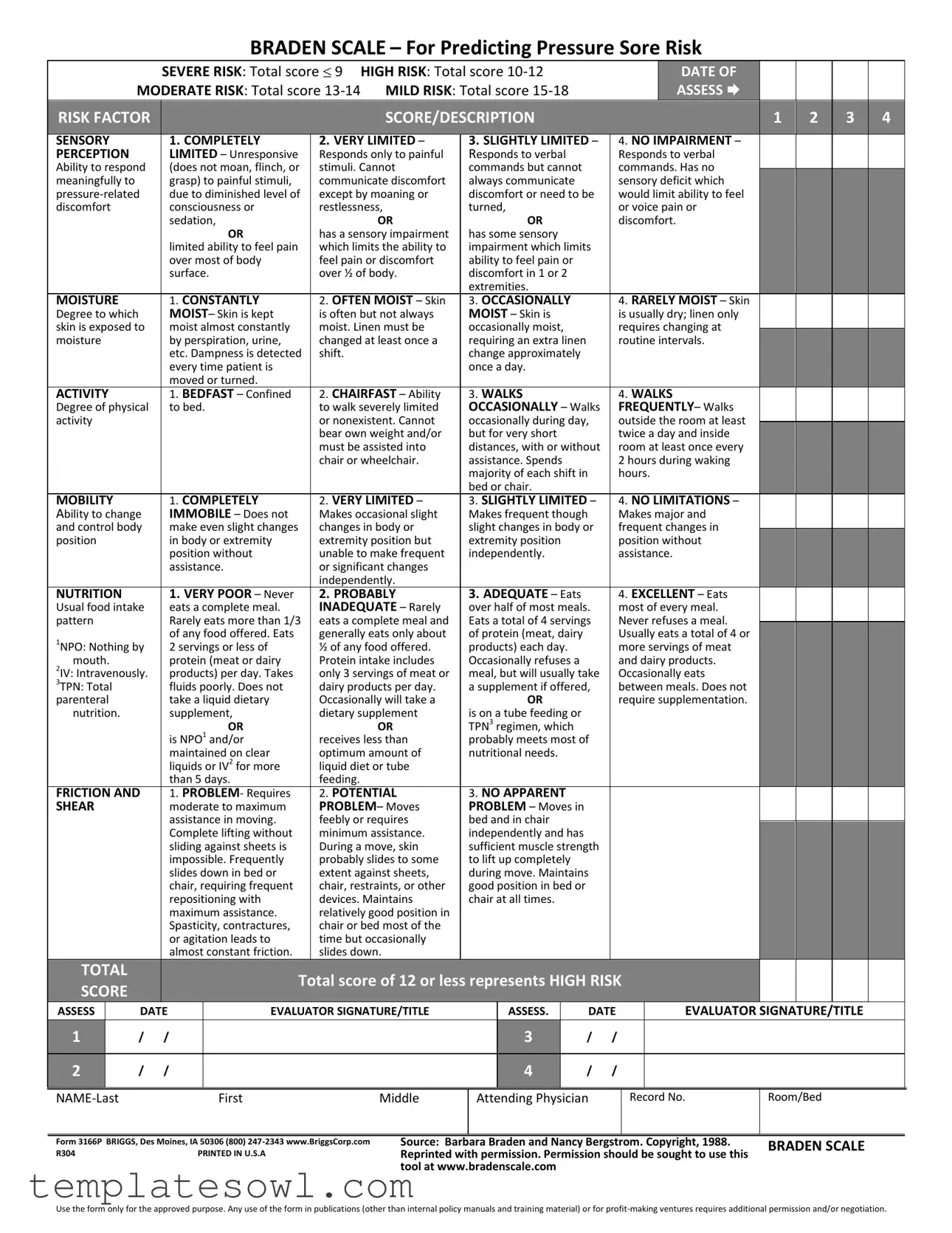What is the Braden Scale form?
The Braden Scale form is a tool used by healthcare professionals to assess a patient's risk of developing pressure sores, also known as bedsores. It evaluates several risk factors, including sensory perception, moisture, activity, mobility, nutrition, and friction/shear. Each of these categories is scored, and the total score helps determine the patient's level of risk ranging from mild to severe.
How is the scoring system structured on the Braden Scale?
The Braden Scale assigns scores from 1 to 4 for each risk factor. A higher score indicates a lower risk of pressure sore development. The total score can range from 6 (indicating very high risk) to 23 (indicating no risk). The risk levels are categorized as follows: Severe risk (9 or below), High risk (10-12), Moderate risk (13-14), and Mild risk (15-18).
Why is it important to use the Braden Scale?
Using the Braden Scale is essential for early identification of patients at risk for pressure sores. Early detection allows healthcare providers to implement preventative measures, such as repositioning, proper skin care, and nutritional support, thereby reducing the occurrence of pressure sores and improving patient outcomes.
How often should the Braden Scale be completed?
The Braden Scale should be completed upon patient admission and at regular intervals thereafter. It can be beneficial to reassess the patient regularly, especially if there are changes in their health status, mobility, or other relevant factors that could affect their risk level.
Who can complete the Braden Scale assessment?
Any trained healthcare professional, such as nurses or nursing assistants, can complete the Braden Scale assessment. It is crucial that the person conducting the assessment has an understanding of the scoring system and the risk factors involved in predicting pressure sore risk.
What should be done if a patient scores high on the Braden Scale?
If a patient is evaluated and scores high on the Braden Scale, healthcare providers should implement appropriate interventions. These may include more frequent repositioning, specialized skincare routines, ensuring adequate nutrition, and possibly using pressure-relieving devices to protect vulnerable areas of the skin.
Can the Braden Scale be used in various healthcare settings?
Yes, the Braden Scale is versatile and can be used across different healthcare settings, including hospitals, nursing homes, and home healthcare situations. It is beneficial in any environment where patients may be at risk for pressure sores due to limited mobility or other health complications.
Is there any specific training required to use the Braden Scale?
While formal certification is not mandatory, proper training on using the Braden Scale is recommended. This training ensures that healthcare providers understand how to assess patients accurately, interpret scores correctly, and implement preventative strategies effectively.
What resources are available for more information about the Braden Scale?
For more information about the Braden Scale, resources are available on websites such as www.bradenScale.com. Additionally, healthcare facilities may provide internal training materials and guidelines that focus on using the Braden Scale effectively.
Are there any limitations to the Braden Scale?
Although the Braden Scale is useful, it does have limitations. It may not account for all individual factors that contribute to pressure sore risk. Factors such as comorbidities, skin conditions, and patient hygiene practices are important to consider alongside the scale results for a comprehensive assessment.

